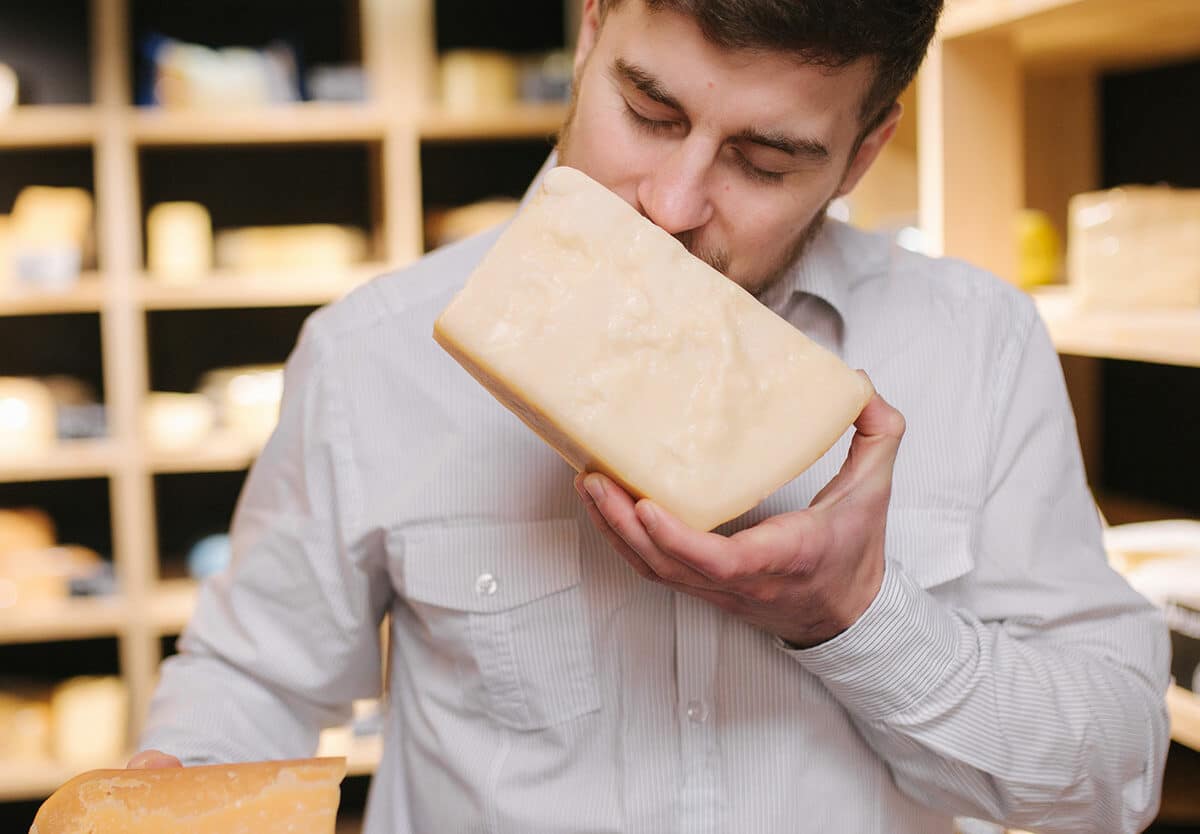Cheese Sacrifice Purchase Day is celebrated every year on July 29. The point of this holiday is to buy cheese specifically to ‘sacrifice’ it by cutting a piece and putting it on a mousetrap. That way, you can rid your house of mice every year— at least, that seems to be the original idea behind it. Nowadays, people see it as something very antiquated, since we have many new methods of pest control. Studies show that mice don’t even like cheese!
For those reasons, many have been trying to reinvent the holiday and what it means to ‘sacrifice’ cheese.
History of Cheese Sacrifice Purchase Day
Cheese has been present for millennia, well before written history. The oldest direct evidence of cheesemaking was discovered in a 7,000-year-old piece of pottery in Poland. While the first documented evidence of cheese dates from the early second millennium B.C., it comes from Sumerian cuneiform texts of the Third Dynasty of Ur. The pressing and salting of curdled milk could have been the start of cheesemaking. The first cheeses were sour and salty, with a texture similar to rustic cottage cheese or modern feta.
At the start of the ancient Roman era, cheese became a sophisticated delicacy, and many foreign kinds of cheese were imported to Rome to satisfy the tastes of the social elite. Pliny’s “Natural History,” from the year 77 A.D., devotes two whole chapters to the many types of cheese the Romans enjoyed. And Columella’s “De Re Rustica”, circa 65 A.D., details a cheesemaking process involving rennet coagulation, pressing of the curd, salting, and aging. Most cheeses were initially recorded in the late Middle Ages, though they may predate this era. Cheddar dates from the 1100s, Parmesan was recorded in 1597, Gouda in 1697, and Camembert in 1791.
In the Americas, conquistadors said the Inca and other Andean cultures consumed llama cheese. Since the European colonization, local cheeses have been developed across both North and South America. The first factory for the industrial production of cheese opened in Switzerland in 1815. However, large-scale production found real success in the United States. Jesse Williams, a dairy farmer from Rome, New York began making cheese in an assembly-line fashion in 1851. Mass-produced rennet began in the 1860s, and the mass production of cheese made it readily available to the poorer classes. Factory-made cheese overtook traditional cheese-making during the World War II era, and since then, factories have been the source of most cheese in Europe and especially in America.
Cheese Sacrifice Purchase Day timeline
Abundant milk fat is found in Poland inside clay sieves, a type of holed pottery, that dates from this period.
Reserved for the social elite, many foreign kinds of cheese are imported to Rome to satisfy them.
Many other famous types of cheese are first recorded in the late Middle Ages too, such as Parmesan, Gouda, and Camembert.
It opens in Switzerland, a country famous for its cheese.
The mass production of this set of enzymes used in cheesemaking allows for mass-produced cheese for the lower classes.
Cheese Sacrifice Purchase Day FAQs
Is cheese a mold?
No, only some varieties like blue cheese have specific species of mold that are intentionally added during the cheesemaking process to enhance the flavor or texture.
Can I eat expired cheese?
Yes, even if there is some mold growing, consuming expired cheese can be safe as long as you cut off the mold and it still smells alright.
Which cheese is vegetarian?
Some popular brands are Organic Valley, Bel Gioioso, Cabot, Applegate, Tillamook, Amy’s, Laughing Cow, and Horizon. Always check the ingredient list of any cheese you buy.
Cheese Sacrifice Purchase Day Activities
Eat your favorite cheese
Surely, eating it yourself counts as a way to ‘sacrifice’ it. You can eat it on its own, or use it in an elaborate recipe like pasta sauce, pudding, or cheese puffs.
Purchase an expensive cheese
In this case, the ‘sacrifice’ would be to your wallet. Think of it as a reward for being so good this half of the year.
Try a cheese you never tried before
We’re talking about the type of cheese that intimidates you, something that you’ve worried may be too intense but wanted to try. If you end up not liking it, you can just say you ended up sacrificing yourself.
5 Fun Facts About Cheese
Italy has at least 400 cheeses
They are listed in the British Cheese Board, which lists about 700 different products.
“The moon is made of green cheese”
This was said in a proverb by John Heywood from 1546, referring to an extremely credulous person, so while it pops up a lot in popular media, no, people didn’t actually believe it when they started saying this.
It was discovered by accident
At least for the Arabs, they have a legend from 4000 years ago that says a traveler put her day's milk in a sheep-stomach canteen and headed out across the desert, and by the time she got to her destination, it had turned into cheese due to the heat and the rennet in the canteen.
Some cheese is illegal in America
The law says raw cheese is legal only after it has been aged for at least 60 days, this is to eliminate or adequately reduce E. coli and Salmonella, and if foreign cheese doesn’t follow this U.S. standard, it cannot be imported.
Caves are used to age cheese
As weird as it sounds, it’s the best way to age cheese due to the cool and humid environment.
Why We Love Cheese Sacrifice Purchase Day
It’s a day to appreciate cheese
Any day where you can eat cheese is a good day. But through this article, you can also appreciate the history and how much work goes into cheesemaking before it’s sacrificed.
It’s a day to try a different type of cheese
We believe trying new things and broadening your horizons is always a good thing. It’s because there are so many cultures that there are so many ways of making cheese, and being able to appreciate them is a way to appreciate other cultures.
It’s another chance to share
Of course, all of this is better with others. Invite friends and family over to eat a meal that has a lot of cheese in it, or have them taste different types of cheese on their own. It’s a good moment to introduce them to your favorite kinds of cheese and bond with them.
Cheese Sacrifice Purchase Day dates
| Year | Date | Day |
|---|---|---|
| 2025 | July 29 | Tuesday |
| 2026 | July 29 | Wednesday |
| 2027 | July 29 | Thursday |
| 2028 | July 29 | Saturday |
| 2029 | July 29 | Sunday |










